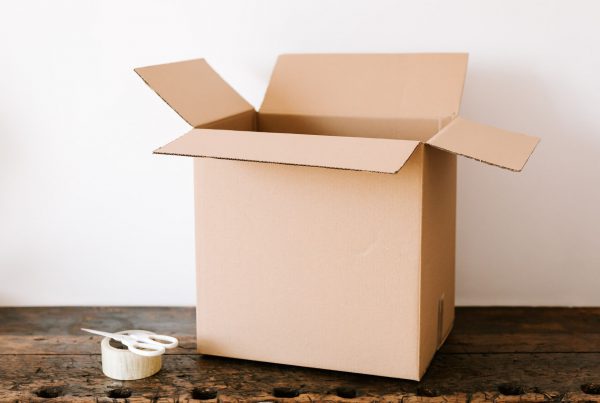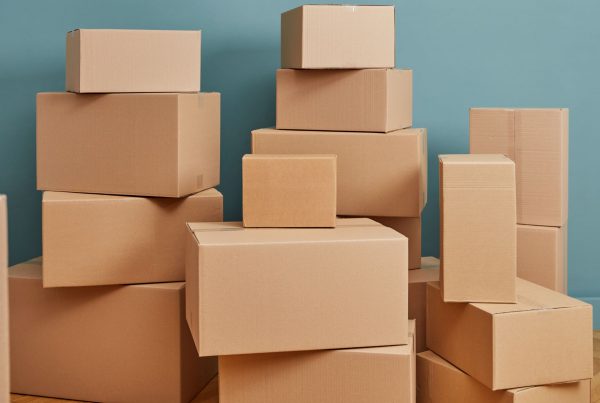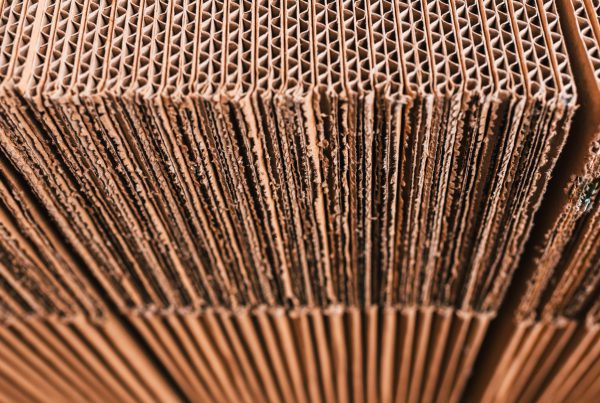Surprising stat: nearly 40% of small-item online orders in the U.S. ship in compact mailers under 6 inches — a scale that changes how you choose packaging.
The right small shipper keeps a product snug, cuts filler, and creates a polished unboxing moment. At The Boxery, we see listings offering finishes like white, kraft, black, and pink, with common delivery windows of 2–4 days and tracking included.
Choose this size when your item is compact, benefits from a tight fit, and needs a gift-like presentation. A 4x4x2 profile keeps movement low, reduces DIM weight risk, and often trims shipping costs and filler needs. If you’re specifically hunting for a simple, retail-ready 4x4x2 box, you’ll get that snug, tidy footprint that just… works.
Think about pack sizes too: trials of 10–25 help you test presentation, while bulk sets of 50 to 1,000+ support launch cadence and seasonal surges. Strength options such as 26 ECT and 32 ECT give you durable cardboard choices without excess material.
Key Takeaways
- Right-sizing reduces rattles and filler while improving the customer experience.
- Small mailers balance protection and cost, lowering DIM weight exposure and price pressure.
- Multiple finishes and ECT strengths let you match packaging to product and audience.
- Pack options range from trial counts to bulk sets, helping with inventory and delivery timing.
- Consistent footprints speed packing stations and save time across many shipments.
Meet The Boxery’s 4x4x2 Box: Compact Packaging for Big Impressions
A compact shipper can make a small product feel like a premium gift before the box is even opened.
The Boxery’s 4x4x2 is built to give you that moment—clean lines outside, careful protection inside. It uses sturdy corrugated cardboard so small items sit snug and look polished on arrival.
You’ll cut filler, speed packing, and reduce wasted space. That helps teams move faster during busy fulfillment runs and keeps shipping costs down.
Choose from white, kraft, or on-trend colors to match your brand. Packs range from 10 to 1,000+, with many U.S. orders arriving in 2–4 days and tracking included. Same-day shipping cutoffs commonly fall in the 3–4 pm window.
- Compact, premium presentation for gifts and samples.
- Durable cardboard construction that reduces void fill.
- Pack sizes that scale from trials to bulk fulfillment.
| Finish | Typical Pack Sizes | Delivery Window | Best Use |
| White | 10–500 | 2–4 days | Premium gifts, retail items |
| Kraft/Brown | 25–1000+ | 2–4 days | Eco-forward brands, samples |
| Colored (Black/Pink) | 50–500 | 2–4 days | Standout retail and subscription packs |
Who it’s for: Gifts, Samples, and Small Retail That Ship Safely
Small, well-fitted packaging can turn a simple product into a memorable gift experience. If you sell jewelry, cosmetics, candles, or tech accessories, choosing the right fit matters. We built this guidance to help you pack small, present well, and ship with confidence.
Popular use cases include stud earrings, delicate pendants, lip balms, single compacts, small candles, and earbuds. These items benefit from a snug interior that limits movement during shipping and keeps presentation crisp at delivery.
- Jewelry needs cushioned, close-fit packaging so pieces arrive intact and feel like a gift.
- Small candles and wax melts do best in a sturdy, low-profile vessel with a bit of protective paper or foam.
- Cosmetics present beautifully in tidy gift boxes that double as retail-ready packaging.
- Tech accessories stay organized and surprise customers with a polished unboxing.
- Small-batch sampler sets keep inventory nimble and shipping predictable.
4x4x2 Box Features and Construction Details
Smart engineering in a compact profile keeps items secure while improving packing speed. This size blends sturdy materials with quick-assemble designs so you get protection without fuss.
- Durable corrugated cardboard with crush-resistant design. Choose a common 26 ECT or 32 ECT to match fragile goods and storage needs.
- Mailer and tuck styles for quick assembly. Die-cut, fold-to-assemble, and tuck formats save precious seconds across a run.
- Snug 2-inch height that reduces void fill and movement for a cleaner presentation.
- Clean interior for tissue, cards, or inserts; simple labeling and quick scanning in fulfillment.
Finish Options: White, Kraft/Brown, and On-Trend Colors
Finish choices shape first impressions—what your customer sees before they touch the product.
White mailers read as premium and minimal. Labels pop and colors feel crisp, which makes gift boxes and retail packs look upscale. Use white when you want clean photography, refined tissue, and subtle stamps to highlight your brand.
Kraft/brown leans eco-forward and feels authentic. It pairs well with recycled ribbon, twine, or paper accents. If your story centers on handmade or natural goods, this finish reinforces that message without extra fuss.
Black and pink choices help your packages stand out. Color-forward finishes make seasonal drops and collaborations pop on social feeds. These options keep the same sturdy cardboard construction, so style doesn’t sacrifice strength.
Mix finishes across a set to A/B test engagement or keep one look for consistent recognition. These options typically ship with tracking and 2–4 day delivery in many U.S. offers.
Right-Sizing: 4x4x2 vs. 4x4x4 and Nearby Dimensions
Size matters: picking the shallower profile keeps items steady while taller profiles let you add cushioning or small extras.
When the shallower profile is ideal versus taller options
Use 4x4x2 when your product is slim and benefits from a tight fit. This reduces movement and the need for filler. It works well for jewelry, thin cosmetics, or flat tech accessories.
Step up to 4x4x4 when height matters—if you need room for a padded insert, crinkle, or a branded card. Taller depth gives cushion and a more gift-like reveal without risking crush.
Nearby sizes worth considering
Think about 4x3x2 if your item is slightly narrower. That small change can trim filler even more while keeping a snug profile. Choose 4x2x2 for ultra-compact goods or sample vials where minimal headspace is critical and presentation still counts.
Right-sizing boosts shipping efficiency and cuts excess packaging. Keep an assortment of two to three go-to sizes to respond fast to product mix changes. Adjacent dimensions are widely available in corrugated cardboard, so you can scale without changing materials.
Looking for a longer footprint? For elongated kits and balanced cube, an 18 x 8 x 8 box hits a sweet spot for many pick-and-pack lines. And when your item is long and low-profile, a 20 x 12 x 4 box in the long-box family keeps DIM weight in check without awkward overhang.
Comparable U.S. delivery windows of 2–4 days on shipping boxes let you swap sizes without delaying campaigns.
Strength You Can Count On: ECT Ratings for Small Shipping Boxes
Edge-crush ratings tell you how well a small shipping profile stands up to stacking and rough handling. These numbers matter when you balance weight, fragility, and carrier touchpoints.
Understanding common 26 ECT and 32 ECT options
26 ECT suits light contents and tight fits. If you mail soft items or single-sku samples with internal cushioning, 26 ECT keeps costs down while offering enough support.
32 ECT gives extra compression strength. Use it when items are denser, fragile, or will stack in storage. The extra margin protects product and brand reputation.
Choosing the right strength for mailing vs. storage
Match the rating to weight, drop risk, and how your items are handled. Mailing light goods? 26 ECT often works with good internal protection and snug packaging. If you store or stack inventory, prefer 32 ECT for safer compression resistance. Standard U.S. delivery windows of 2–4 days reduce transit time—but not handling risk.
Test real conditions—vibration, short drops, and label application—to confirm a rating before you scale. Standardize a rating across a set to simplify packing and reorders. Document ECT rules in SOPs so every packer uses the right shipping boxes. When unsure, choose the stronger option—returns cost more than the material difference.
Pack Sizes and Sets for Every Operation
Choose pack quantities that match your launch pace—small tests, predictable runs, and bulk reserves all play a role.
Start small to learn fast. Order 10–25 packs to validate fit, workflow, and customer feedback before you commit to larger buys.
From trials to steady sellers
When your process stabilizes, move to 50–100 to simplify shipping and daily fulfillment. These counts work well for growing sellers who need predictable inventory.
Bulk efficiencies for scale
Buy in bulk—200, 300, 500, and 1000 packs—to lower unit cost and cut reorder frequency. Bulk orders stabilize supply and free up time for marketing and product work.
Keep two pack levels on hand: daily working inventory and a buffer stock. Align pack choices with seasonality—pre-holiday and launch windows need heavier coverage. Track weekly usage and set reorder points by pack counts, not raw units. Shipments with tracking streamline receiving and labor planning for mailing and fulfillment.
Price and Value: How The Boxery Keeps Costs Competitive
We know price matters—especially when you ship at scale. Smart ordering reduces unit cost and keeps your packing line moving without surprises.
Clear price breaks at common quantities—50, 100, 200, 300, 500, and 1,000—help you plan buys that lower the per-item cost. Many listings include tracking and 2–4 day delivery, which supports leaner inventory and fewer emergency restocks.
Compare landed cost, not just sticker price. Include materials, shipping, handling, and returns in your math. Flat-rate handling can change the comparison, so confirm fees before you buy a set.
- Match pack size to forecast to unlock the best price per unit.
- Balance finish and cardboard strength to keep presentation and control costs.
- Track damage rates—paying a little more for sturdier shipping boxes can save on returns.
Shipping, Mailing, and Delivery Expectations in the U.S.
Reliable transit windows let you plan launches, influencer sends, and restocks with confidence. Most sellers see standard shipping and delivery in the U.S. land at about 2–4 business days. That predictability helps you time promotions and manage inventory without frantic rushes.
Fast fulfillment with 2–4 day standard delivery
Plan on 2–4 business days for comparable supplies. Use delivery estimates when you schedule drops so fulfillment and marketing stay aligned.
Same-day shipping cutoffs and flat-rate handling notes
Many sellers offer same-day shipping if orders ship before a 3–4 pm cutoff. Build your picking schedule to hit that window. Confirm carrier rules for mailing lightweight parcels—dimensional pricing can change costs. Flat-rate handling may apply for special handling or fragile items; check fees before you buy a set.
Free returns and order tracking conventions
Tracking is usually included, so you can monitor inbound stock and avoid downtime at the pack station. Free returns are common on marketplace listings and make testing easier.
If rain, snow—or just nasty humidity—are in your forecast, don’t overthink it. Upgrade some lanes to weatherproof boxes and keep labels legible. It’s one of those quiet decisions that saves orders you’ll never hear about.
Assembly and Packing Tips for a Tighter, Safer Ship
A crisp assembly routine keeps every package square, scan-ready, and confident in transit.
Start simple: pre-fold tuck flaps before you load to speed assembly and create a crisp shape for labeling. Use one interior wrap—tissue or kraft—to cradle the item, then add a snug insert or light void fill so nothing shifts during mailing.
Best practices for tuck mailers and secure sealing
Seal edges with quality tape or the locking tabs provided so the closure looks clean on arrival. Keep presentation items flat against the product to avoid bulges that affect delivery and scans. Place labels on the broad face for easy scanning at induction and tidy curb appeal. Document your SOPs: assembly order, sealing method, and inspection steps for consistent packing.
Void fill, inserts, and protection for fragile gifts
Gently shake a closed pack—if anything moves, add a slim insert or corner pads. For fragile gifts, thin foam or molded inserts that match the footprint protect without bulking up the profile.
Quick organization fix I love on busy benches: stage accessories in a small, stackable corrugated open top bin box. It keeps tape, stickers, and cards in reach—less wandering, more shipping.
Branding the Unboxing: Simple Ways to Elevate Your 4x4x2
A thoughtfully styled unboxing can turn a simple shipment into a repeatable brand moment.
Start small and be intentional. Add a bold label or a stamped logo on the lid—small surfaces amplify details, so a simple mark reads as deliberate and premium.
Match tissue to your finish—white, kraft, black, or pink—and fold it once for a tidy reveal. Slip in a flat thank-you or care card; this tiny touch turns a purchase into a meaningful gift.
- Use color-matched stickers or washi to tie the interior to your palette.
- Choose slim, recyclable inserts when you need to pack small and protect fragile items.
- Seasonal wraps or limited-edition accents boost shareable moments and repeat buys.
- Align designs with your campaign timing so delivery lands during your launch window.
Compare The Boxery 4x4x2 Box to Other Small Box Options
Choosing the right small shipping profile helps you balance protection, postage, and presentation.
Choose the 4x4x2 when your product is compact and benefits from a snug fit—this is ideal for jewelry, small cosmetics, and accessories.
Step up to 4x4x4 if you need extra height for cushioning, taller items, or a layered unboxing effect. For ultra-compact goods, try 4x3x2 or 4x2x2, but test protection in real drops.
Mailer styles are lighter and faster to assemble. They cut material and often lower postage for single items. Standard shipping boxes are suitable for heavier contents and for stacking in storage. Compare total impact—weight, filler, labor—before you switch. Small cardboard kraft finishes support eco messaging without losing durability. Boxes 4x4x2 usually balance presentation and protection while keeping postage efficient.
Need a bigger workhorse for warehouse rhythm and pallet patterns? Read up on the 22x22x12 box strategy—clean stacks, faster picks, calmer floors.
Conclusion
A consistent, compact set simplifies inventory and makes daily mailing predictable.
When you want small packaging that works hard without wasting space, choose a tight fit and smart finishes. Clear quantity price breaks and tracked 2–4 day delivery make planning easier for both launches and steady runs.
Build your boxes set around hero SKUs and keep small cardboard components minimal yet thoughtful. Start with a 100 pack and scale to larger cases as repeat orders rise.
The Boxery helps you pick the right pack white or pack brown finish, the best set size, and the right balance of price and protection so every gift box arrives as intended.
FAQ
When should I choose a 4x4x2 box for gifts, samples, or small retail items?
Choose this compact option when your item is small and flat—think jewelry, sample-size cosmetics, thin candles, or tech accessories. Its 2-inch height keeps items snug, reduces the need for void fill, and presents a tidy unboxing that feels like a gift.
What makes The Boxery’s 4x4x2 design different from generic small packaging?
The Boxery focuses on a crush-resistant corrugated build and smart tuck-mailer styles that assemble quickly and look finished. That combination gives you secure shipping performance with an attractive presentation—ideal for white gift boxes or kraft brown packaging.
Can small-batch brands and subscription services use these for inserts or sample packs?
Absolutely. Packs of 10–25 work well for trials and curated samples; 50–100 are perfect for scaling a small subscription or pop-up run. You get consistent sizing, easy branding, and lower void fill compared with larger mailers.
What construction and closure options are available?
You’ll find durable corrugated material with tuck-style mailer closures for fast assembly and clean edges. Options include plain tuck, self-locking tuck, and sealable flaps that make packing and sealing straightforward for busy teams.
Which finishes are available for gifting and retail appeal?
Common finishes include crisp white for premium unboxing, kraft/brown for an eco-forward look, plus on-trend colors like black and pink for standout retail packaging. You can add labels, stamps, or tissue to elevate the presentation.
How do I decide between this size and a taller 4x4x4 or other nearby dimensions?
Pick the 2-inch height when items lie flat or stack thinly. Move to 4x4x4 if you need extra height for thicker products or multi-layer inserts. Consider intermediate sizes like 4x3x2 or 4x2x2 when you need a tighter fit without increasing footprint.
What ECT ratings should I consider for mailing versus storage?
For standard U.S. mailing, 26 ECT is often sufficient for light, non-fragile items. Choose 32 ECT when you need extra crush resistance for longer transit or heavier contents. Match strength to shipping conditions and product fragility.
What pack sizes are typical, and how do bulk options affect cost?
Typical offerings range from sample packs (10–25) to small seller counts (50–100). Bulk orders—200, 300, 500, or 1000—lower the cost-per-unit and are economical for growing brands or fulfillment needs. Quantity breaks provide the best value.
How does pricing work, and how can I balance cost with presentation?
Price breaks scale with volume; larger orders reduce per-piece cost. To balance budget and brand, choose Kraft for cost-effectiveness or white for a premium look, then use affordable touches—stickers or tissue—to polish presentation without a big price jump.
What are typical shipping and delivery expectations within the U.S.?
Expect fast fulfillment—many sellers offer 2–4 day standard delivery. Check same-day shipping cutoffs if you need urgent dispatch. Flat-rate handling and simple tracking are common; confirm returns policy and any free-return options before ordering.
Any tips for assembly and packing to prevent movement during transit?
Use the tuck-mailer correctly and apply strong tape on seams when needed. Add thin inserts, kraft tissue, or low-profile void fill to immobilize items. For fragile gifts, include padded mailers or small bubble wraps inside the box for extra protection.
How can I brand the unboxing without a large minimum order?
Add branded labels, custom stamps, or printed tissue for a polished effect with low minimums. Colored boxes like black or pink make an immediate impression; pairing them with a discreet logo sticker keeps costs down while boosting perceived value.
When should I step up or down in size or choose a mailer versus a standard shipping box?
Step up in height when items are thicker than 2 inches or require layers of padding. Choose mailer-style tuck boxes for finished presentation and fast packing; opt for standard shipping boxes when you need stacking strength or large-quantity storage.





Recent Comments